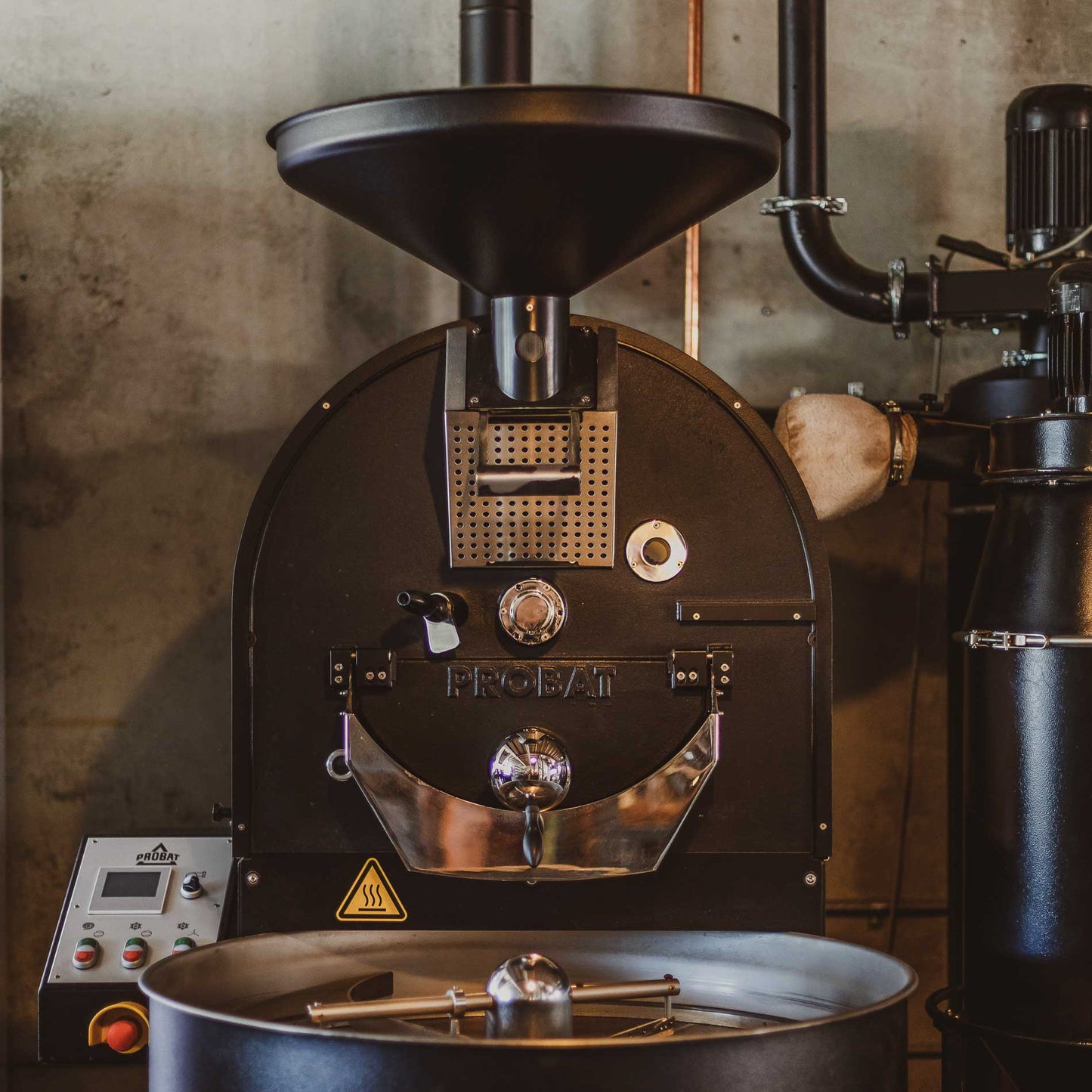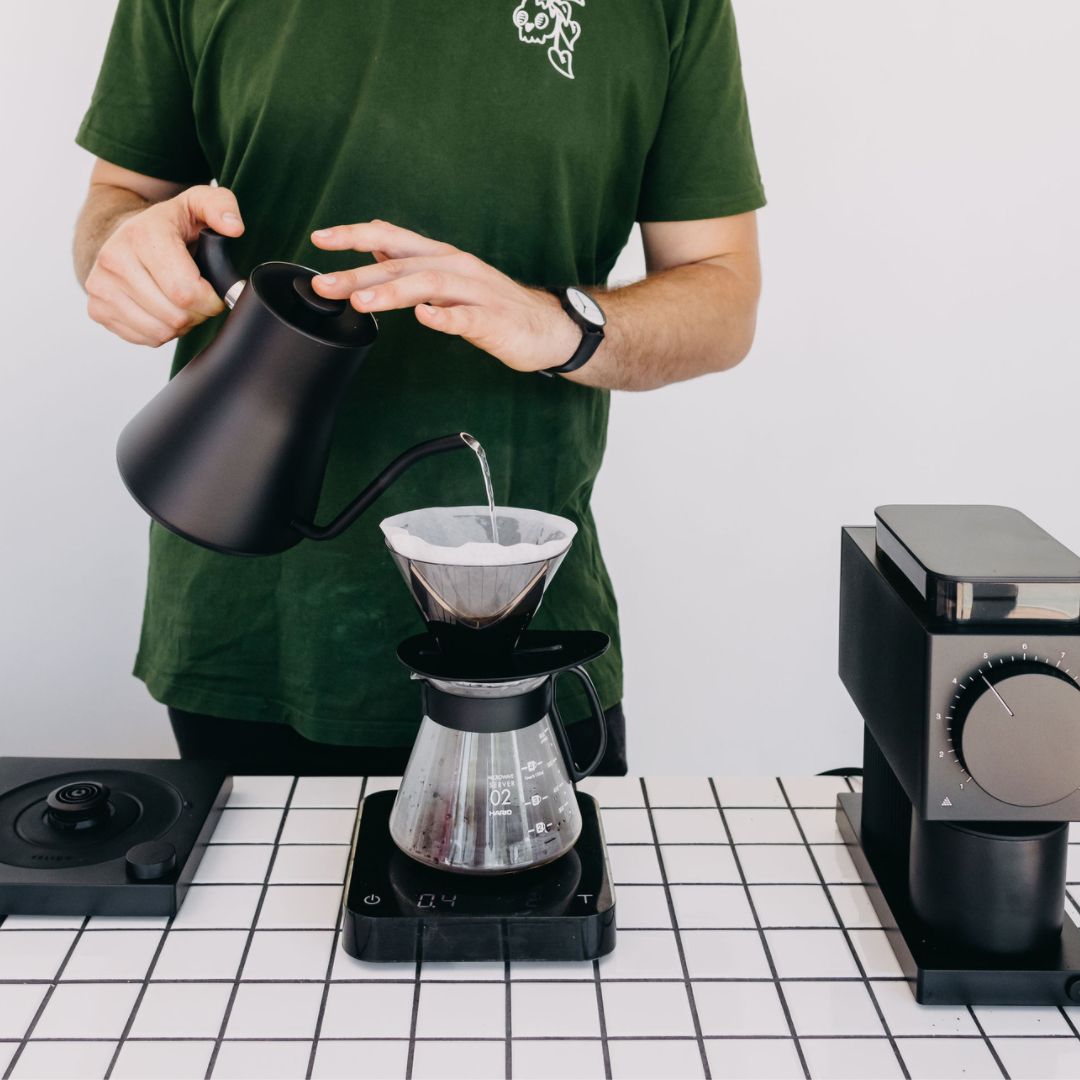
Coffee roasting is the process of turning the green coffee beans supplied to us from farms and processing facilities across the world into the brown and fragrant beans we associate with a delicious cup of coffee. For the purpose of this article we will focus on coffee roasting but if you’d like to know more about the growing and production of green beans check out our article on coffee processing. At Grouch and Co our coffee experts roast coffee to a number of different profiles depending on the variety, processing, density and hardness of the coffee bean.
Great so what is a roast profile?
A roast profile is the parameters the roaster uses to roast specific coffee. Roast time as well as the intensity of heat are variables under our control during the roasting process and the application of these variables determines our roast profile. A typical roast can be described through three main stages, the drying stage, browning stage and development stage.
Drying stage
In this stage we are drying out the green beans removing their moisture content prior to beginning the roasting process. At the same time as we are drying the beans we are also loading them with energy using an endothermic reaction (heat absorbing). A typical drying phase lasts four to eight minutes where the ambient temperature rises to around one hundred and sixty degrees.
Browning stage
At this stage, coffee beans begin to brown through a Maillard reaction which breaks down sugars and amino acids to create a myriad of aroma and colour compounds. In the early stages of this drying process the development of these aroma compounds give off the smell of toasting bread. The roast is slowed through this stage to allow for the development of flavour. At the end of this stage the coffee will start to make a popping sound, this is known as the first crack, and marks the start of the development stage.
Development stage
The development stage begins after the first crack and denotes the change from endothermic to exothermic reaction. What this means is that the coffee bean has been amassing and absorbing energy through heat throughout the drying and browning stages. It then reaches a point where it explodes outward, cracking the surface of the bean and changing the nature of the reaction to one in which it gives off heat (exothermic) through steam. During this stage the roast is slowed further to develop aromas and avoid smoky or sharp flavours.
Roasting light, medium or dark
This is a very general indicator of the roast and flavour profile of the coffee and refers specifically to how dark the beans are at the end of the roasting process. At Grouch and Co we roast predominantly light roast coffee as this style of roasting allows for the development of the subtle aromas and flavours that naturally occur within high quality coffee. As we move toward dark roasted coffee, those floral, fruity flavours attributed to the coffee's origin are diminished as the roast time is extended. Darker roasted coffee gives us bitter, roasty and burnt flavours, and is favoured by customers who associate the bitter flavour with coffee strength. Dark roasted coffee is also favoured by roasters who wish to disguise undesirable flavours in poorly produced, low grade green beans.
Coffee Roaster, man or machine?
At Grouch and Co we roast all our coffee on our faithful Probatone, a type of drum roaster. Within the Probatone the coffee is rotated within a large drum and the roast is controlled through the application and intensity of heat applied to the bottom of the drum. This form of drum roasting gives us access to a huge energy potential that allows us to extract the maximum flavour from our coffee and ensures that the roast is incredibly stable and consistent. Similarly to our machinery, the man behind the machine, our head roaster Greg is also incredibly stable and consistent and enjoys nothing more than a well cupped Ethiopian.

